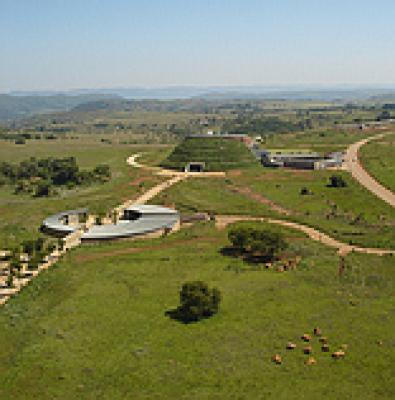The Fossil Hominid Sites of Sterkfontein, Swartkrans, Kromdraai and Environs, known as the Cradle of Humankind, were declared a World Heritage Site on December 2 1999.
The Cradle of Humankind covers an area of over 47 000 hectares of privately owned land north west of Johannesburg and is home to over 17 000 residents.
In 2005, two other highly significant sites, Makapan and Taung were listed as serial sites together with the Cradle of Humankind World Heritage Site (COH WHS). Together, these are the Fossil Hominid sites of South Africa.
The area is of outstanding universal value, because it contains a complex of palaeo-anthropological sites, which have yielded some of the most valuable evidence, world-wide, of the origins of modern humans, hence its name Cradle of Humankind.
The declared area is 47 000 hectares and extends approximately between Oaktree, Hekpoort, Broederstroom and Lanseria in Gauteng. Most of the site is on dolomite, a rock type which is slightly soluble in water. This has two major consequences- the formation of caves and the formation of fossils.
There are currently over 200 caves on the site, with possibly more to be discovered. There are 13 fossil sites which have been extensively examined and some have produced fossils of human ancestors and their relatives. A variety of stone tools used by human ancestors such as axes and scrapers have also been identified.
The range of other creatures which co-existed in the area included extinct animals such as short-necked giraffe, giant buffalo, giant hyaena and several species of saber-toothed cats. Numerous fossils of extant creatures such as leopards and hartebeest have also been found.
We know that Australopithecus africanus were present in the Cradle from about 4-2 million years ago. It is generally thought likely that these hominids (upright walking "apes"), or close relatives of them, were human ancestors.
Paranthropus robustus is another hominid whose fossilized remains have been found, but it is generally considered to be a branch of the hominid family tree that became extinct, and not a very close relative of our ancestors. Homo ergaster, present around 1 million years ago is even more likely to be a direct ancestor than Australopithecus having a very close resemblance to modern humans Homo sapiens.
In the more modern era the area was occupied by /Xam or similar Khoe-San people for what some historians believe to be 30 000years or longer, then by Sotho-Tswana people from the 1500''s or possibly much earlier who were displaced by Mzilikazi around 1820. There after Voortrekkers in about the 1840''s and other whites (thereafter) gradually took possession of the land.
Maropeng is the official visitor centre for the Cradle of Humankind World Heritage Site.
The Sterkfontein Caves (in krugersdorp) are open every day of the year except Christmas and Easter. Tours through the cave run every half an hour, with the first tour leaving at 09h00 and the last tour leaving at 16h00. These tours last approximately 45 minutes.
Another popular cave which does tours is Wonder Cave.
Both of these venues are suitable for children, but not easily accessible for the elderly or disabled. Near to Wonder Cave is the Rhino And Lion Nature Reserve.




